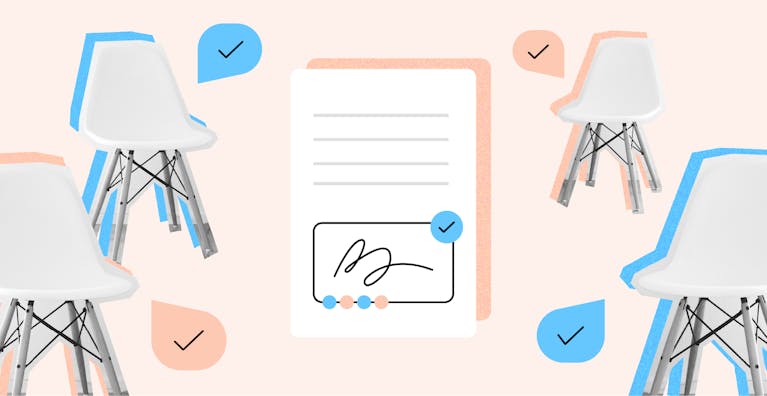Making Tax Digital (MTD) for Income Tax represents one of the most significant changes to the UK tax system in decades. If you're a sole trader or landlord, this transformation will fundamentally change how you record and report your income to HMRC. With the first phase launching in April 2026, understanding MTD requirements now is essential for avoiding penalties.
This guide explains what Making Tax Digital for Income Tax involves, who it affects, key deadlines, and practical compliance steps.
Brief summary:
- Making Tax Digital for Income Tax is HMRC's digital reporting system requiring sole traders and landlords to keep digital records and submit quarterly updates instead of annual Self-Assessment returns.
- Mandatory from April 2026 for qualifying income over £50,000; April 2027 for over £30,000; pending April 2028 for over £20,000.
- Digital record-keeping via MTD-compatible software, quarterly income/expense updates, and annual final declaration by 31 January.
- Points-based system—one point per late quarterly update; four points trigger £200 penalty with additional penalties for further delays.
- Choose MTD-compatible software now, establish digital record-keeping processes, and sign up before your compliance deadline to avoid last-minute stress.
What is Making Tax Digital for Income Tax?
Making Tax Digital for Income Tax is HMRC's initiative to modernise how self-employed individuals and landlords manage and report income tax. The program replaces the traditional annual Self-Assessment tax return with a digital reporting system requiring quarterly updates throughout the year.
Core Requirements
MTD for Income Tax involves three key components:
- Digital Records: Keep digital records of all business income and expenses using MTD compatible software. Paper-based or standalone spreadsheet systems won't meet HMRC requirements.
- Quarterly Updates: Submit summaries of business income and expenses to HMRC four times per year through MTD compatible software. These quarterly updates replace the single annual tax return for business income, ensuring your tax affairs remain current throughout the year.
- Final Declaration: Complete an end-of-year final declaration by 31 January, confirming all income from all sources and any additional allowances or adjustments.
Good to know:
According to HMRC's official guidance, digital record-keeping can save sole traders and landlords hours previously spent gathering information at tax return time.
Who Needs to Use Making Tax Digital?
MTD income tax applies to self-employed individuals and landlords with qualifying income above specified thresholds.
Qualifying Income Explained
Qualifying income includes gross income from self-employment and property before any tax allowances or expenses:
Included:
- Self-employment turnover and business income
- UK property income from residential and commercial lettings
- Furnished holiday let income
- Other property income (grant of lease, reverse premiums)
Not Included:
- Salary from employed positions (PAYE)
- Pension income
- Dividends from investments
- Interest from savings
Example: £40,000 PAYE employment plus £20,000 as landlord = no MTD required. £40,000 as sole trader plus £20,000 as landlord = £60,000 qualifying income requiring MTD from April 2026.
Implementation Timeline
MTD rolls out in phases based on qualifying income:
Qualifying Income | Implementation Date | Estimated Affected |
|---|---|---|
Over £50,000 | 6 April 2026 | Approximately 780,000 individuals |
Over £30,000 | 6 April 2027 | Additional 970,000 approximately |
Over £20,000 | April 2028 (pending) | Further expansion |
Good to know:
HMRC will review 2024/25 Self-Assessment returns filed by 31 January 2026 to identify individuals requiring MTD from April 2026. Those with qualifying income over £50,000 should receive notification letters in February 2026.
Exemptions from MTD
Automatic Exemptions:
- Qualifying income of £20,000 or less
- Non-UK resident foreign entertainers/sportspeople (with no other MTD income)
- Those unable to manage affairs digitally (disability, age, remoteness, religious objections)
Deferred Entry:
- Ministers of religion, Lloyd's underwriters, recipients of married couple's/blind person's allowance
- Individuals requiring SA109 forms (until April 2027)
Important:
For exemption due to inability to use digital systems, you must notify HMRC and receive agreement.
Key Deadlines and Timeline
Understanding MTD deadlines ensures compliance from day one.
Critical Dates
- 6 April 2026: MTD becomes mandatory for sole traders and landlords with qualifying income over £50,000. MTD compatible software must already be in place.
- 7 August 2026: First quarterly update deadline (covering 6 April to 5 July 2026).
- 31 January 2027: Final declaration deadline for 2026/27 tax year, plus any tax payment due.
- 6 April 2027: MTD extends to qualifying income over £30,000.
Quarterly Update Periods
Standard quarterly periods:
- Q1: 6 April to 5 July
- Q2: 6 July to 5 October
- Q3: 6 October to 5 January
- Q4: 6 January to 5 April
Alternative Calendar Quarters: You can elect to use calendar quarters if this aligns better with your accounting. Make this election in your MTD compatible software before submitting your first update.
Attention:
Missing a quarterly update deadline accumulates penalty points. Four points trigger a £200 penalty, with additional £200 penalties for each subsequent late submission. Unlike late payment penalties, these points-based penalties apply even if you owe no tax.
MTD Compatible Software Requirements
Compliance requires using HMRC-recognised software to keep digital records and submit returns.
Software Capabilities
MTD compatible software must:
- Record income and expenses digitally
- Calculate quarterly summaries
- Submit quarterly updates to HMRC via digital links
- Complete final declarations
- Maintain audit trails
Software Options:
- Full-Service Accounting Platforms: Xero, QuickBooks, FreeAgent offer comprehensive bookkeeping, accounting functionality, and MTD submission (£10-£30 monthly).
- MTD-Specific Tools: Dedicated MTD software focusing on HMRC submissions, typically lower cost but fewer features.
- Bridging Software: Creates digital links between spreadsheets and HMRC's systems for those wanting to continue spreadsheet use.
Important:
If you're VAT registered using MTD for VAT, your existing software likely supports MTD for Income Tax. Contact your software provider to confirm Income Tax functionality—you may not need to purchase new software.
Choosing Software
Consider:
- Multiple Income Streams: Software must handle separate records for self-employment and property income
- Integration: Bank feeds, invoicing systems, receipt-capture tools
- Support: Customer support and training resources
- Scalability: Solutions that grow with your business
As you transition to digital record-keeping for MTD, consider digitising your entire contract workflow. Yousign's electronic signature solution ensures all client agreements, supplier contracts, and service agreements supporting your income declarations are executed digitally with full audit trails—creating a seamless digital ecosystem that complements your MTD-compatible accounting software. Our contract management platform helps UK small businesses maintain organised, immediately accessible business documentation.
How MTD Changes Your Tax Process
From Annual to Quarterly Reporting
Traditional: Single annual return after tax year ends, typically rushed in January.
MTD: Quarterly updates throughout the year, maintaining current digital records and providing regular updates on your business income position.
Quarterly Updates Include:
- Business income received
- Business expenses incurred
- Summary profit/loss calculations
Final Declaration Includes:
- Other income sources (PAYE, pensions, dividends)
- Personal allowances and reliefs
- Final tax calculations
Multiple Businesses
If you have multiple businesses or both self-employment and property income:
- Separate Records: Maintain distinct digital records for each activity.
- Separate Quarterly Updates: Individual updates for each income stream. A sole trader who's also a landlord submits eight quarterly updates annually.
- Single Final Declaration: One declaration consolidating all income sources.
Benefits of Making Tax Digital
Time and Efficiency Savings
- Real-Time Records: Capture transactions as they occur, eliminating annual scrambles
- Automated Calculations: Software reduces manual errors and calculation time
- Reduced Year-End Stress: Quarterly updates spread the workload
Good to know:
HMRC estimates digital record-keeping saves hours previously spent on year-end preparation.
Improved Financial Visibility
- Quarterly Reviews: Natural checkpoints for assessing income, expenses, and profitability
- Cash Flow Management: Better tax obligation visibility
- Informed Decisions: Current data supports better business decisions
Reduced Errors
- Automated Calculations: Minimise arithmetic mistakes
- Prompts and Warnings: Software flags unusual entries or missing information
- Clear Audit Trails: Complete transaction histories
Digitise Your Entire Business Documentation
Sign client contracts in minutes, not days

Penalties and Compliance
MTD introduces a points-based penalty system for late submissions.
Points System
- Point Accumulation: One penalty point per late quarterly update, regardless of business number.
- Penalty Threshold: Four points typically trigger a £200 penalty.
- Additional Penalties: Further £200 penalties for each subsequent late submission until points reset.
- Points Expiry: Automatic expiry after 24 months of on-time submissions.
Important:
Points apply only to quarterly updates. Late tax payment follows existing penalty rules.
Final Declaration Penalties
- Late filing: Daily penalties after the deadline
- Very late filing: Additional penalties over three months late
- Deliberate errors: Higher penalties for intentional inaccuracies
Preparing for MTD: Practical Steps
Immediate Actions
- Verify Status: Use HMRC's checking tool to confirm whether and when MTD applies based on your qualifying income.
- Review Current Records: Assess existing record-keeping systems. If you rely on paper records or basic spreadsheets, plan your transition to digital records.
- Research Software: Investigate MTD compatible software options suited to your business. Many providers offer free trials.
- Consider Professional Support: Discuss MTD preparation with your accountant or bookkeeper.
Software Setup
- Choose and Implement: Select your MTD compatible solution and set it up with business details and income categories.
- Connect Bank Feeds: Link business bank accounts for automatic transaction imports.
- Test Submissions: HMRC's pilot program allows voluntary early sign-up for testing.
Good to know:
Register for MTD through your chosen software, not directly with HMRC. Sign-up is now open for voluntary registrations and those needing to comply from April 2026.
Establishing Processes
- Regular Recording: Develop habits for capturing income and expenses promptly
- Quarterly Reminders: Set reminders for submission deadlines
- Document Organisation: Establish digital systems for storing invoices and receipts
- Training: Invest time learning your software's features
At Yousign, our secure electronic signatures enable digital handling of client agreements and supplier contracts—complementing MTD digital record-keeping by ensuring business documentation is organised and immediately accessible.
Special Considerations
Landlords with Property Income
- Multiple Properties: Submit a single combined quarterly update for all residential lettings, rather than separate updates per property.
- Property Expenses: Ensure your MTD compatible software correctly handles allowable expenses like repairs, maintenance, and finance costs.
Self-employed with Multiple Trades
Self-employed individuals operating multiple trades must:
- Maintain separate digital records for each trade
- Submit separate quarterly updates for each business
- Clearly distinguish between different activities in your software
Mixed Employment Status
Employed individuals with self-employment or property income:
- PAYE Income: Employment income doesn't count toward qualifying income thresholds and doesn't require quarterly MTD updates.
- Side Businesses: Only your self-employment or property gross income determines MTD requirements.
Frequently Asked Questions About Making Tax Digital
When exactly do I need to start using Making Tax Digital for Income Tax?
If your 2024/25 Self-Assessment return (due 31 January 2026) shows qualifying income over £50,000, you must use MTD from 6 April 2026. For qualifying income over £30,000, MTD applies from 6 April 2027.
Can I continue using spreadsheets under Making Tax Digital?
Yes, but with requirements. You can use spreadsheets if you add formulas for calculations and connect them to MTD compatible bridging software that submits data to HMRC via digital links. Standalone spreadsheets won't satisfy MTD requirements.
What happens if I miss a quarterly deadline?
You'll accumulate one penalty point per missed quarter. Four points typically trigger a £200 penalty, with additional £200 penalties for subsequent late submissions. Points expire after 24 months of compliant submissions.
Do I still need to submit a tax return under Making Tax Digital?
Yes, but it changes form. You complete a simplified final declaration by 31 January confirming all income sources and allowances. Quarterly updates replace the detailed business sections of traditional returns.
What software do I need and how much does it cost?
You need HMRC-recognised MTD compatible software. Full-service cloud accounting platforms typically cost £10-£30 monthly. Dedicated MTD tools may be cheaper but offer fewer features. Many providers offer free trials.
Getting Ready for Making Tax Digital
Making Tax Digital for Income Tax represents significant change, but with proper preparation, it can transform how you manage business finances. The shift from annual rushed returns to ongoing digital record-keeping and quarterly updates provides clearer financial visibility, reduces errors, and distributes tax administration throughout the year.
Success requires action now: understanding whether and when MTD applies, selecting appropriate MTD compatible software, establishing new processes, and developing comfort with digital systems before your compliance date.
Whether you're a sole trader, landlord, or both, the time to prepare is now. With the April 2026 launch approaching, early adopters will transition smoothly whilst late adopters may face unnecessary stress and penalties.
This is particularly crucial for those just starting out, as establishing good digital habits from day one can simplify tax compliance throughout the business lifecycle. Beyond MTD compliance, implementing corporation tax planning strategies helps optimize your overall tax position, ensuring you claim all eligible reliefs whilst maintaining full HMRC compliance.
Digitise Your Business Documentation
Complement your MTD compliance with Yousign's electronic signature








